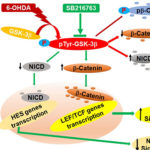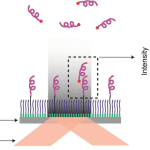Tag Archives: Parkinson’s disease
Can tremor, depression and progression of the Parkinson’s disease be suppressed simultaneously?
Truncation: A possible mechanism for diversity in Alpha-synuclein prion-like properties
Taking medicines the right way: what do people with Parkinson’s do?
Parkinson disease: a tale of three neurotransmitters
GSK-3 beta: a therapeutic target for Parkinson’s disease
Dementia with Lewy bodies and Parkinson’s disease-dementia: Current perspectives
How does Parkinson’s disease gets from your gut to your head?
Breathing problems in Parkinson’s disease: a common problem, rarely diagnosed
Parkinson’s disease (PD) is the second most common neurodegenerative disorder after Alzheimer’s disease. It is characterized by bradykinesia (slowness in movement) tremor, rigidity, and postural instability. Potential non-motor manifestations of PD include depression, anxiety, constipation, overactive bladder
Measuring motivation in Parkinson’s disease through the eyes response to money
TRIM32 and alpha-synuclein: a novel interplay in the neuronal system
‘HATs On’: A small molecule with big potential in epigenetic therapy for Parkinson’s disease
Promiscuous drugs exemplified by dopamine receptor ligands
A systems-level view of cerebellar function: The interplay between cerebellum, basal ganglia, and cortex
The environmental toxin BMAA detected in humans – Cause of neurodegenerative diseases?
Calcium disturbances in Parkinson’s disease
Targeted exercise intervention for bradykinesia in Parkinson’s disease
The right tool for the right job – it is brain surgery after all!
Parkinson’s alpha-synuclein assembles in the disease prone stable dimers
How antioxidants may have a pro-oxidant effect?
Parkinson disease and duodenal levodopa infusion: why patients withdraw the treatment?
Parkinson disease is a chronic and progressive movement disorder associated to degeneration of neurons in the brain, particularly in a region called substantia nigra. These neurons produce dopamine, a neural transmitter that is involved in the control























